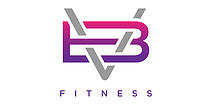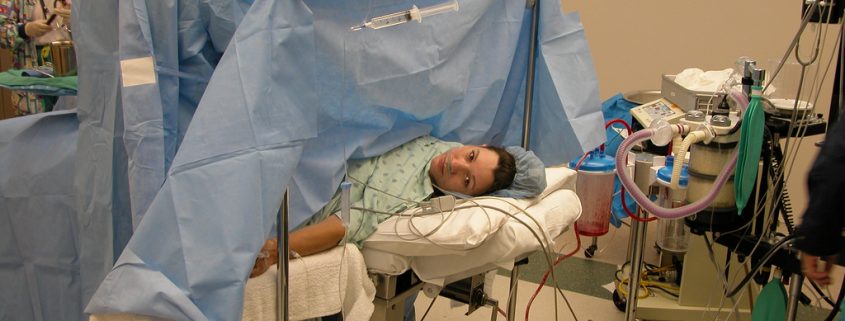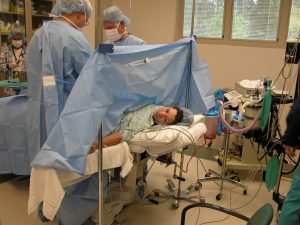1
With c-section rates in the UK at around 26%, as you can imagine I meet a lot of mums who have had one! So I thought a blog covering some of the common questions and misconceptions I come across would be useful…
What is a c-section?
So, what is a c-section? Well, it’s an incision usually made horizontally, just above your pubic hair line, first through the skin, then the fat is moved out of the way, then a fibrous layer of fascia is cut, again horizontally. The rectus abdominis muscles are not cut as as they can be pulled apart along the cling film type structure (called the linea alba) in between the 6-pack muscles. Then the uterus can be opened, usually cut horizontally.
Skin, nerves, blood vessels and connective tissue is all cut, and clambs are used to hold them open so the uterus can be safely accessed.
The uterus and the outside incision are both sutured back together, but the muscles are not. This means abdominal seperation, or diastasis recti is very common after a c-section, and can take longer to heal than it can after a vaginal delivery.
I know I’m having a c-section, so I don’t need to do pelvic floor exercises, right?
If you elect to have a section, there’s a misconception that your pelvic floor will be fine. You might think that because your body won’t be going through the stages of labour, your pelvic floor won’t be affected. This is where you’re WRONG!
Pregnancy itself puts tremendous pressure on your pelvic floor, as the weight of your developing baby gets bigger and bigger, and therefore weakens these muscles. In addition, the nerves that innervate those muscles have been cut, so there is sometimes a loss of ‘connection’. It’s still very important that you strengthen your pelvic floor during and after pregnancy, even if you elected to have a section.
And if you’ve gone through the stages of labour, attempted to deliver naturally, and then had a C-section, think about what muscles have been stressed throughout this ordeal? That’s right – the abdominals and the pelvic floor! You may have been at it for hours, pushing and pushing and putting a immense amount of pressure on these areas.
What is recovery like after a c-section?
After a c-section, your recovery time is longer than a natural birth. You may have a loss of sensation, a numbness, in your abdominals especially around the scar area, and the scar tissue itself may reduce your ability to do certain movements completely pain-free. The nerves that have been cut do regrow, but it can take well over a year for full sensation to return, and sometimes it never does.
Your pelvic floor may take a little while to activate consciously too, but keep sending the signal from your brain to these muscles, and eventually, it will switch back on, I promise.
When can you return to exercise following a c-section?
You will need to have had your Doctor’s check up before your return to exercise after a c-section, which, depending on your Doctor could be 8 weeks, 10 weeks or even 12 weeks, so give them a call to see what their guidelines are.
I ask mums wait a minimum of 10 weeks before they see me, however gentle deep core connection work and pelvic floor exercises can be done much sooner.
Just remember this is major surgery, and your body will need time to heal. Everyone’s recovery is different, so listen to how you feel.
What exercise is safe after a c-section?
Release work is hugely important- I find areas where the muscles are linked to the abdominal wall, such as the front of the thighs, can be very tight after c-section. So one of the first steps I’d recommend is getting a postnatal massage! I build in hands on release work to exercise sessions too though, and make sure clients have techniques they can use at home.
In addition scar massage is hugely beneficial- so much so I’ve written a whole blog on it here! (If the thought of touching your scar makes you feel ill, you’re not alone: read about scar aversion and the reasons behind it here.)
And postnatal-specific core exercise is probably THE best form of exercise for any new mum to be doing, regardless of the type delivery.
When I train a client who’s had a section, I start by asking them what sensation they have in the abdominals, bearing in mind that they may have next to no sensation, and still feel very sore and numb.
Next I ask how different areas of their pelvic floor feel. After this, I check for abdominal separation, and basic re-activation and re-education exercises to either the pelvic floor or abdominals to help the muscles return to their original strength and fire properly.
Unfortunately, there is no quick-fix cure for strengthening the abdominals following a section. It can take months of training, careful instruction and lots of homework. If your abdominals aren’t assessed and addressed early following the correct procedures and using the correct techniques, then they may stay in a weakened state, which can lead to poor posture, pelvic discomfort and lower back pain. The good news though, with the right assessment, instruction and homework, it is fixable.
I hope this helps- if you have any questions leave them in the comments below and for more advice you can download my 10 Tips for getting back in shape after having a baby.
1






Leave a Reply
Want to join the discussion?Feel free to contribute!